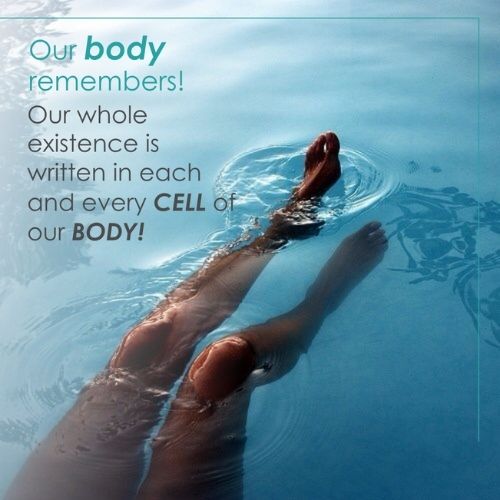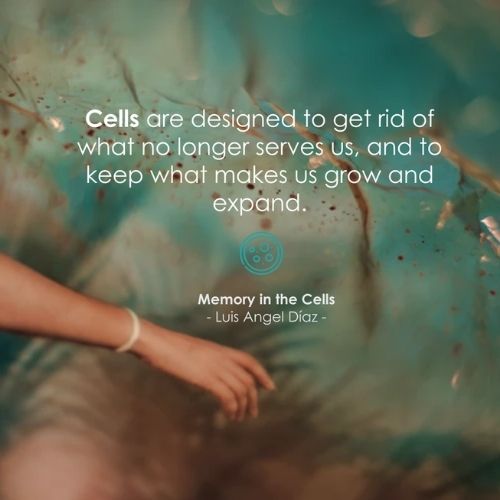
Cellular memory: Beyond the Brain.
Traditionally, memories were thought to reside solely in the brain. However, the intriguing hypothesis proposes that cells throughout the body, beyond neurons in the brain, have the capacity to store and retain information. This challenges the conventional view and expands our understanding of memory and behavior.
In many alternative practices, there has always been acceptance of the common link between the repressed emotion and where in the body the imbalance or disease begins to manifest. For instance, according to Oriental medicine, each organ or gland has one or more emotions that influence it. More often than not, the emotional trauma begins to manifest the imbalance in a corresponding organ or gland.
With all this ancient wisdom and modern scientific research as supporting evidence, we can no longer ignore the fact that emotional toxicity plays an equal and perhaps a more dominant role in achieving optimal health.
The cellular memory theory says that traumatic experiences can be stored in cells. When we are unable to effectively process our experiences, they become stored as raw forms of cellular imprints. Unprocessed traumatic memories can manifest in our cells and impact mental and physical processes.
This understanding expands our perception of cellular memory beyond the brain, involving the cellular structures of our entire body.
Embracing emotional awareness can lead to a more nurturing emotional environment within ourselves.

How suppressed emotions affects our health
Our bodies are designed to support health, harmony, and interconnection among all parts. However, the presence of both Positive Emotional Charge (PEC) and Negative Emotional Charge (NEC) within us can affect our physical and mental well-being. PEC represents an energy field of life force that is free-flowing and expanding. On the other hand, NEC is contracted energy from unprocessed trauma, negative self-beliefs, fear, and fear-derived emotions like guilt, grief, shame, resentment, and anger. When NEC overwhelms PEC, it leads to dysfunction in the body-mind system. The summatory of NEC in us, is known as the Pain Body.
Chronic immersion in negativity from excessive NEC impairs cellular functioning. The emotional charge blocks receptor sites from receiving messages for basic functions, hindering protein production and nutrient assimilation. Disease and imbalance arise in the absence of balance, affecting overall health.

The intricate connection between emotions, neuropeptides, and cellular memory is a fascinating area of exploration. Emotions involve neurochemical processes that influence well-being. Neuropeptides act as messengers, facilitating communication between cells throughout the body.
The chemicals running our body and brain are also involved in emotions. Chronic negativity impacts cellular receptor sites, hindering efficient functioning. Emotional well-being influences neuropeptide availability and the ease with which viruses can invade cells. Awareness of our emotional states allows us to influence the composition of neuropeptides within our cells, promoting a healthier cellular environment. By attending to our emotional well-being, we actively contribute to the efficiency of our cells and overall health.
Day after day, this chronic immersion in negativity is what appears to produce harmful influences on health. The key, according to Dr. Candace Pert, is found in complex molecules called neuropeptides. The brain contains about 60 different neuropeptides, including endorphins. These neuropeptides are the means by which all cells in the body communicate with each other. This includes brain-to-brain messages, brain-to-body messages, body-to-body messages, and body-to-brain messages. Individual cells, including brain cells, immune cells, and other body cells, have receptor sites that receive neuropeptides. The kinds of neuropeptides available to cells are constantly changing, reflecting variations in your emotions throughout the day. The kind and number of emotion-linked neuropeptides available at receptor sites of cells influence your probability of staying well or getting sick.


Traditionally, memories were thought to reside solely
in the brain. However, the intriguing hypothesis proposes that cells throughout the body, beyond neurons in the brain, have the capacity to store and retain information. This challenges the conventional view and expands our understanding of memory and behavior.
Cellular memory suggests that memories, habits, interests, and even tastes can be encoded and preserved in various cells. Non-neural cells, such as immune cells and glial cells, may play a role in storing and transmitting cognitive and behavioral information.
The hypothesis also highlights the potential influence of epigenetic modifications, which regulate gene expression without altering the DNA sequence. These modifications in cells may impact the encoding, retention, and transgenerational inheritance of memories and behaviors.
Interdisciplinary Research:
Exploring this hypothesis requires collaboration among scientists from diverse disciplines, including neuroscience, cellular biology, genetics, epigenetics, psychology, and cognitive science. This interdisciplinary approach allows for the investigation of the complex interactions between cells and their potential involvement in cognitive processes beyond the brain.
1. Dr. Michael Levin: A leading figure in the field of regenerative biology, Levin investigates the role of electrical signaling in the body, particularly in the context of cell behavior, tissue regeneration, and neural development.
2. Dr. Moshe Szyf: Renowned for his research in epigenetics and behavioral genetics, Szyf explores how environmental factors can influence gene expression and potentially affect memory formation and cognitive processes.
3. Dr. Bruce Lipton: An expert in cell biology, Lipton has proposed that the environment can influence gene expression through cellular signaling, suggesting the possibility of non-neural cellular involvement in memory storage and behavior. It’s important to note that while these researchers have contributed to related areas, their specific work may not directly align with the hypothesis you mentioned. Nonetheless, their expertise and research interests may intersect with the broader topic of memory storage and information processing beyond the brain.
Cellular Memory Release is a focused method on accessing and transforming this emotional toxicity thereby allowing all holistic parts – spiritually, emotionally, and cellularly – to communicate and regain a state of balance. We invite you to click here and learn more about how the Pain Body, which is the accumulation of this energetic toxicity, plays a role in your life.
